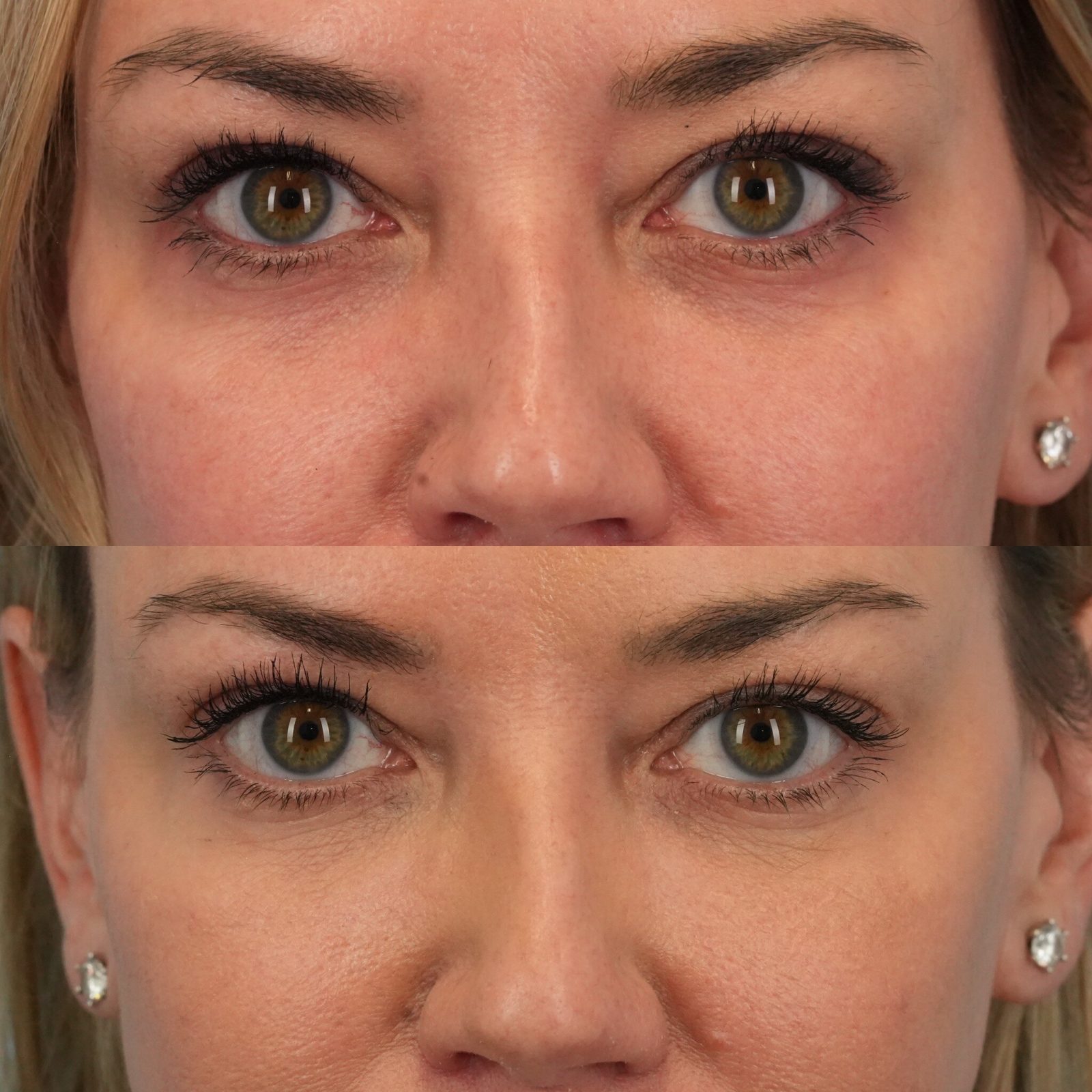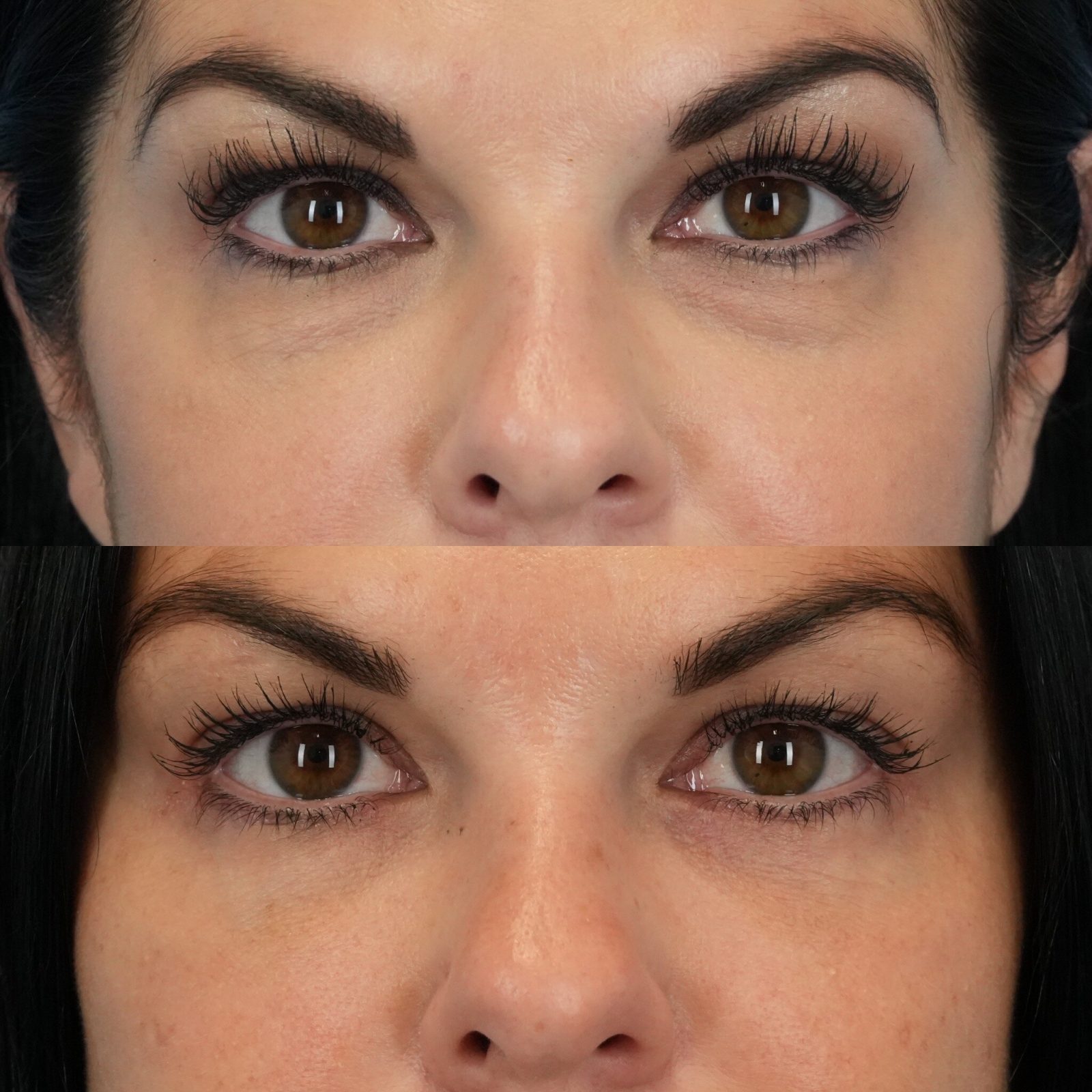
Photo Credit: Courtesy of Dr. Jason Bloom
Have you been having restless nights of sleep that result in waking up with dark circles around your eyes? There’s a high possibility. So, what do you do? You attempt to sleep longer hours throughout the week to get rid of the dark pigmentation and load on lbs of undereye cream, but what you soon realize is that no matter how long you sleep, these dark circles are going nowhere.
This is where Haute Beauty expert Dr. Jason Bloom gets involved because this, my friend, is the cause of infra-orbital hollowing the lack of volume, fat, and soft tissue support that occurs around and under the eyes. This hollowness can lead to shadowing and concavity in the periocular area, often contributing to “dark circles” that you’ve been complaining about. Now to fix this, you need filler, which Dr. Bloom thoroughly discusses below.

Photo Credit: Courtesy of Dr. Jason Bloom
What are the causes of infra-orbital hollowing?
Infraorbital hollowing occurs as a result of the natural aging process and can be exacerbated by weight loss. This can be seen in men and women, even in their early 20s, and is a very common concern that patients come into the office asking about.
How does filler solve infra-orbital hollowing?
There are a number of hyaluronic acid fillers that we use to help improve infraorbital volume loss and hollowing. For years, I used only Restylane-L in this area because of its low crosslinking, hyaluronic acid concentration, and relative ease of dissolution, if needed. In recent months, I have moved to using RHA Redensity in this area and have been really loving my results. That product has a very low crosslinking, low reactivity and the lowest hyaluronic acid concentration on the market at 15mg/mL, making it have very little water affinity or swelling, which is very important when injecting the infraorbital areas. By injecting a hyaluronic acid filler in this area, it provides volume to mask or camouflage the hollowing and fill it in. While it is not the right option for every patient, it does improve the shadowing of many candidates. At this point, I tend to use Restylane-L in patients with deeper hollows, where I need to push out the tissue more, and RHA Redensity in those patients with shallower or more subtle hollowing.

Photo Credit: Courtesy of Dr. Jason Bloom
Is filler the only solution to infra-orbital hollowing?
There are other options that we use to address infraorbital hollowing more permanently. One of the most common procedures that I perform is structural fat grafting in the periorbital, midface & other facial areas. While this surgical procedure has some downtime, it is an excellent way to provide some long-lasting volume to a hollowed infraorbital area. Additionally, I have a specialized way to purify the fat and then size it to be appropriately injected into the periocular area. It is truly one of my most requested and talked about surgical procedures.
How long does the filler last in the undereye?
Most hyaluronic acid filler lasts about 9-15 months in the infraorbital areas. That is because we are injecting this filler deeper into the tear trough and periorbital areas and underneath the orbicularis oculi muscle. Filler usually is partially broken down by muscle contraction and mechanical stress, but if it is injected under the muscle, it is not subject to those same stressors and, therefore, lasts longer in this area.
For more information, visit Dr. Brian A. Levine's social media:

























